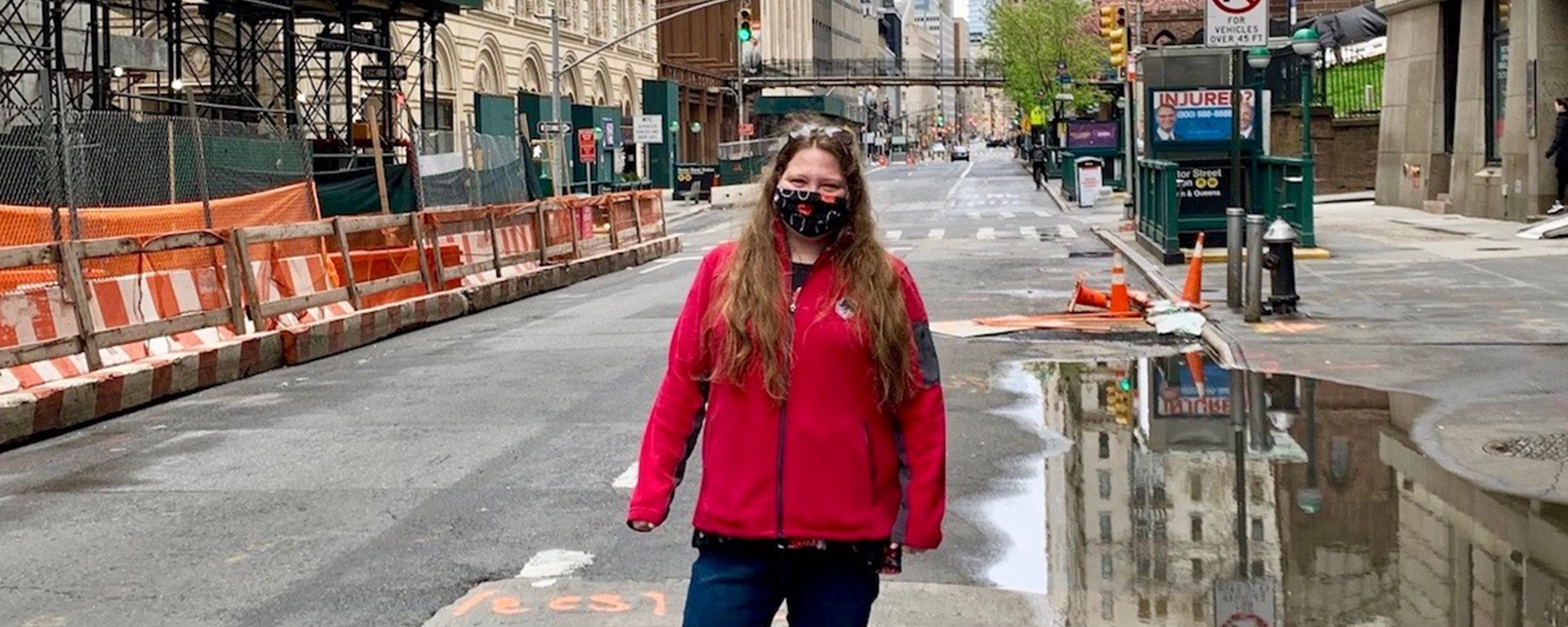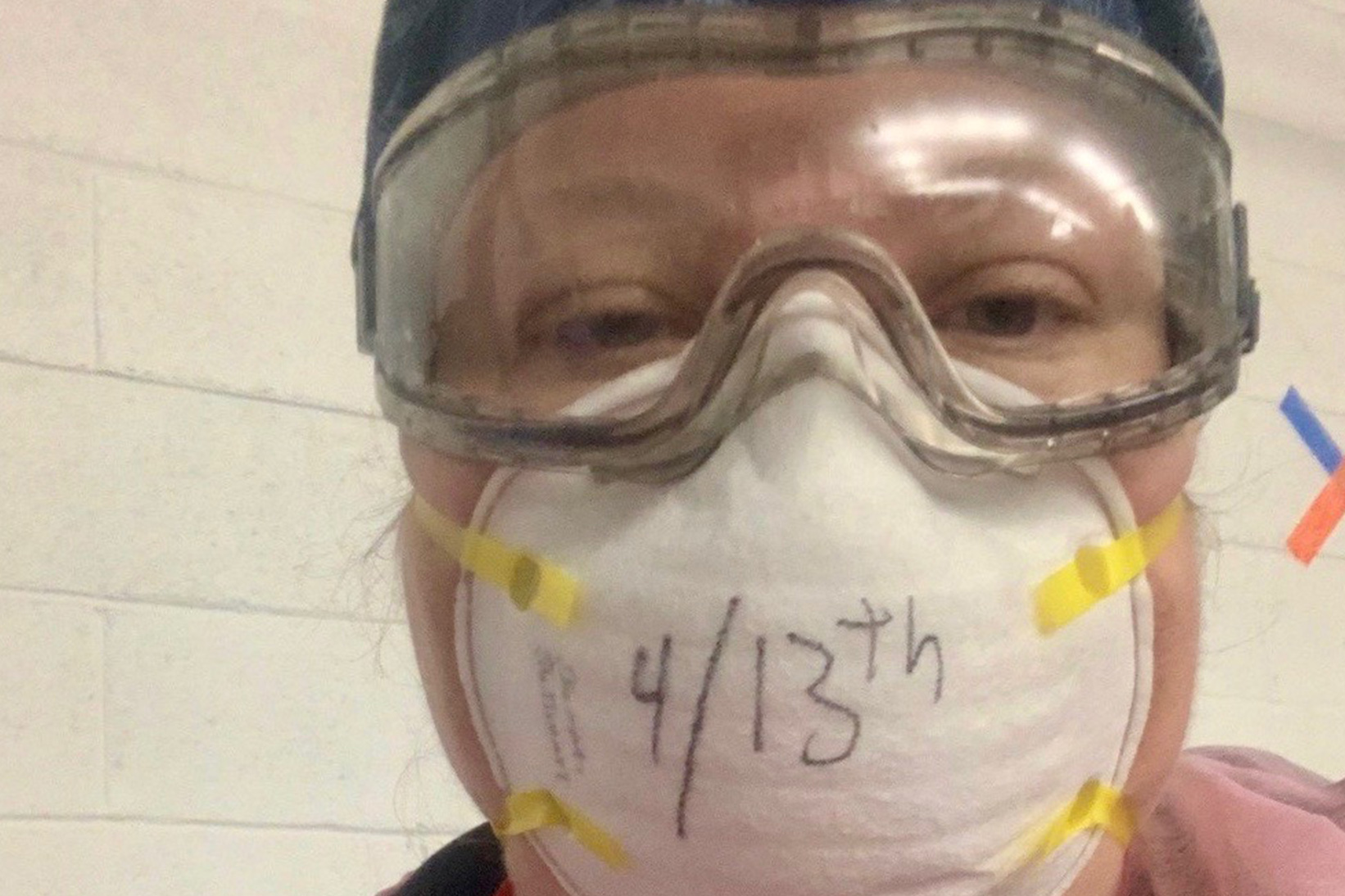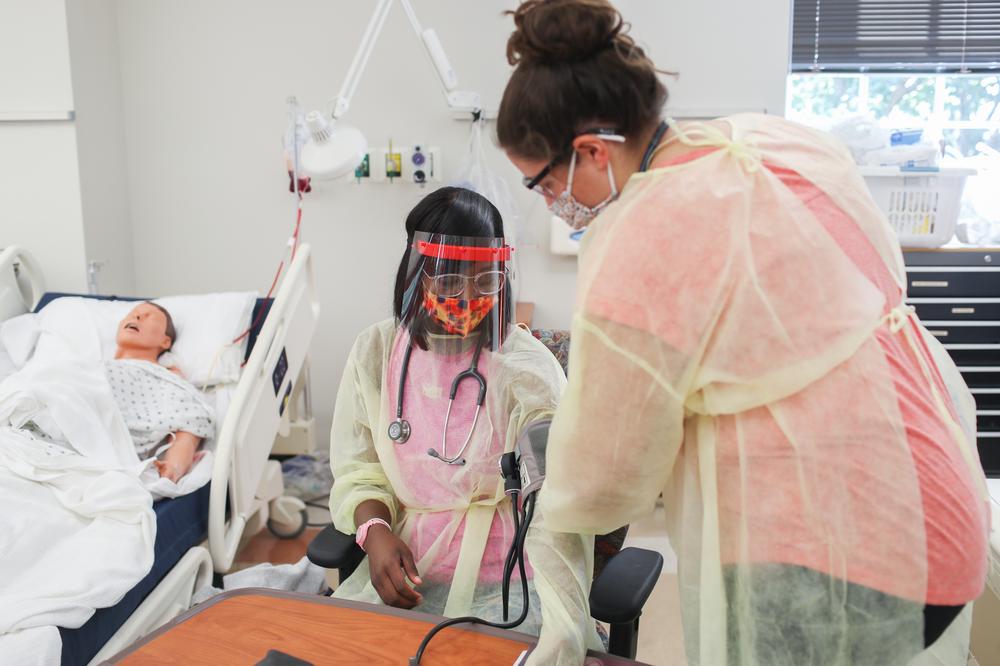APSU nursing student helping in New York: ‘Loss on such a grand scale is incredibly challenging for me’ |
||
Many of the hundreds of COVID-19 patients that Registered Nurse Sarah Sullivan has cared for in New York have died in the emergency room where she worked for 30 days last spring. |

|
“As a nurse, I’ve lost patients before, but loss on such a grand scale and when they’re so young …,” she said before taking a breath and looking down. “I don’t think any of us came out here thinking we were going to be superheroes and save the world,” she continued. “It is a very, very helpless feeling when you have no beds and there’s nothing you can do even through all of your best efforts. “That’s incredibly challenging for me,” she paused again. “I never wanted to be a hospice nurse for that very reason,” she continued. “That’s been my role lately, just holding people’s hands. “They’re alone. They don’t have visitors. And they know they’re dying.” |

‘The nurses here were drowning’ |
||
|
Sullivan worked 12- to 14-hour shifts every day except one during her 30 days in New York to help with the coronavirus pandemic. “I have a skill, and it was needed,” said Sullivan, an Austin Peay State University student who will earn a Bachelor of Science in Nursing in July. “I went into nursing to help people, and there were a lot of people here who needed help. “Not just the patients but other health care workers,” Sullivan added. “The nurses here were drowning.” Sullivan is working in a Level 1 Trauma emergency room at a hospital now, but she’s also helped at field hospitals in the city. Related stories:
“Most of what we’re seeing right now are patients with COVID complications,” she said. “At first, there were about 300 patients (citywide) a day being ventilated. Now, we’re down to dozens a day.” Sullivan cared for people with acute respiratory distress who needed intubation before going to the intensive care unit (ICU). “A lot of our patients actually are in the 25-to-40-year range,” she said. “They’re having a lot of heart attacks and strokes (because of clotting). So, it’s mostly trying to stabilize those and get them to the ICUs.” |

‘Reversal of Roles’ |
||
|
Sullivan ended up in New York City after a company she had done contract work for contacted her on April 6 about helping in New York. She’s a nurse at El Paso (Texas) Behavioral Health, and she’s completing Austin Peay’s BSN work online. The El Paso hospital’s medical director told Sullivan “that I needed to follow my heart and my skill set and go where the need was greatest. He allowed me to take a leave of absence.” Her husband, Sgt. First Class William Sullivan, and she also needed to decide if she should go. He served at Fort Campbell for seven years before being reassigned to Fort Bliss, Texas. “It was kind of a role reversal for my husband and me because he’s usually the one leaving to go help people,” Sullivan said. The company contacted Sullivan on April 6. She was on a plane to New York on April 8. Her husband, an Army career counselor at Fort Bliss, is home with their five kids. |
“I don’t think any of us came out here thinking we were going to be superheroes and save the world,” Sullivan said on her experience working in New York City hospitals in the spring. Story continues below.
Returning home |
||
|
“The hospitals are not quite as busy, and part of that is because a lot of nurses answered the call for help,” Sullivan said. “Another part of it is ‘stay at home’ worked.” Sullivan’s contract ends May 25, but she doesn’t know if she’ll return home then. The city “is starting to open things back up now, so we’re probably going to see another surge right about the time my contract is up,” she said. Sullivan also has to consider classwork. Once she graduates in July, she’ll start in Austin Peay’s family nurse practitioner program. “As hard as it’s been trying to keep up with homework for the BSN program, I don’t know that I want to be here for the master’s program,” she said. Her Austin Peay professors, however, know where Sullivan is and what she’s doing. They’ve worked with her on extended deadlines. “I’m immensely grateful to all the faculty in the nursing department, every single one of them, and to the faculty in my core classes,” she said. “They have been phenomenal.” In an email to APSU School of Nursing’s Dr. Debra Wilson, Sullivan said the school’s public and community health lessons helped prepare her for her service in New York. “Nobody really knows what’s going on sometimes, we’re just taking care of patients, but sometimes you just have to step up and say, ‘OK, we’re going to break it down this way,’” Sullivan said. “My education at Austin Peay, had I not had those components, the leadership in community and public health, I don’t think I’d be as successful or as prepared as I am.” |